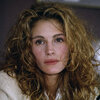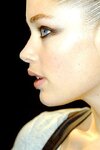This is my personal guide to help you more easily and precisely rate women. It consists of seven key factors that determine a woman’s looks, with breakdowns and examples of women for each factor.
I made one earlier on ************ for the male version. Feel free to check it out via the link below.
Male Guide On .Org
Let's dive in
1. Facial Harmony
General Definition:
Facial harmony refers to the proportions and alignment of a woman's facial features that create a balanced appearance.
Factors Defining Facial Harmony:
Facial Thirds: Ideally, each third of the face should be around 33%. A slightly smaller lower third is acceptable.
Symmetry: Models often have some asymmetry; if it’s not overly noticeable, it won’t significantly affect the score. However, noticeable asymmetry in the eyes, nose, and mouth is a bigger problem because our eyes are drawn to that region faster.
Mid-Face Ratio: An ideal ratio between 0.97 and 1.07 is preferred; longer faces will appear less attractive.
FWHR (Facial Width to Height Ratio): A ratio above 1.85 is optimal; lower ratios indicate longer faces, which are less desirable.
Bitemporal Width: The forehead should be about as wide as the jaw; a large forehead tapering to a narrow jaw is unattractive.
Dimorphism: This indicates how feminine a woman's face is and is crucial for harmony.
Examples:
2. Eye Area
Eyebrows: Dark, dense, and moderately thick eyebrows are indicators of health. Lower medium set brows balance facial proportions; overly low brows will appear masculine. A positive brow tilt is preferred.
Eye Spacing: Eyes should have an interpupillary distance of 45-48% of facial width; eyes spaced one eye width apart is ideal.
Eye Shape: Women generally have wider, less vertically narrow eyes. A sharp medial canthus is attractive.
Canthal Tilt: An ideal tilt is between 5-8.5 degrees; slightly positively tilted eyes are preferred.
Extras: Sufficient bone mass near the eyes prevents dark circles and eye bags.
Examples:
3. Jaw
Jawline: Should not be recessed or overly protruding; excess body fat will mask jaw definition.
Ramus: A developed and reasonably long ramus is ideal.
Jaw Angle: The ideal gonial angle is between 116-126 degrees; angles above 130 degrees are less attractive.
Bigonial Width: Jaw width should be 82-91% of cheekbone width.
Chin: Should harmonize with the face, being proportionate in size.
Jaw Frontal Angle: Ideal angle is between 84-97 degrees.
Examples:
4. Lips
Lip Size: Fuller lips are desirable; the upper lip should protrude slightly past the lower lip.
Lip Shape: A uniform, straight lip shape is preferred. A noticeable cupids bow is highly attractive.
Lip Width: Lips should be wider than the nose, ideally 1.5-1.7 times wider.
Lip Health: Healthy lips are red and free of damage.
Examples:
5. Nose
Nasofrontal Angle: Ideal angles are between 120-135 degrees.
Nasolabial Angle: Ranges from 96-117 degrees; smaller angles appear more masculine.
Nose Shape: A slimmer bridge tapering to a wider base is favored.
Extras: Nostrils should not be bulbous or asymmetrical.
Examples:
6. Cheekbones
Height: High cheekbones are universally attractive; low set cheekbones can lead to a melting face look.
Prominence: Women generally have more prominent zygomatic bones than men. Good prominence is favorable.
Distinguishing Features: High set cheekbones exhibit a pronounced ogee curve.
Examples:
I reached the limit of 20 pictures per post so I can't insert any more visual examples. So see post under this thread for Illustrative examples of the terminology used.
Good cheekbones: Sui He, Monica Bellucci
Bad cheekbones: Selena Gomez, Cardi B
7. Skin, Hair, and Health
Skin: Clear, healthy skin is verym important; blemishes and uneven tone detract from attractiveness.
Eye Health: The sclera should be white and healthy.
Hair: Dense hair with minimal thinning is ideal. Studies suggest a preference for brunette hair in women.
Everything specified here is not the be all and end all. A woman can still have only a few good features and be considered attractive. Beauty is still largely subjective.
Last edited:






















 High iq and high effort thread.
High iq and high effort thread.